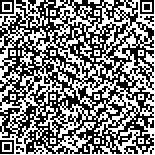| 摘要: |
| We consider the problem of attitude synchronization for systems of rigid body agents with directed
topologies. Two different scenarios for the rotation matrices of the agents are considered. In the first scenario, the rotations are contained in a convex subset of $SO(3)$, which is a ball
of radius less than $\pi/2$, whereas in the second scenario the agents are contained in a subset of $SO(3)$, which is a ball of radius less than $\pi$. Using a control law based on backstepping and sliding mode control, we provide distributed, semi-global, torque control laws for the agents so that the rotations asymptotically synchronize. The control laws for the agents in the first scenario only depend on the relative rotations between neighboring agents, whereas the control laws in the second scenario depend on rotations defined in a global coordinate frame. Illustrative examples are provided where the synchronization is shown for both scenarios. |
| 关键词: Attitude synchronization Distributed control Multi-agent systems |
| DOI: |
|
| 基金项目:The research of J. Thunberg and X. Hu was supported by the Swedish National Space Technology Research Programme (NRFP) and the Swedish Research Council (VR). |
|
| Distributed attitude synchronizationusing backstepping and sliding mode control |
| J. Thunberg |
| (KTH Royal Institute of Technology, S-100 44 Stockholm, Sweden) |
| Abstract: |
| We consider the problem of attitude synchronization for systems of rigid body agents with directed
topologies. Two different scenarios for the rotation matrices of the agents are considered. In the first scenario, the rotations are contained in a convex subset of $SO(3)$, which is a ball
of radius less than $\pi/2$, whereas in the second scenario the agents are contained in a subset of $SO(3)$, which is a ball of radius less than $\pi$. Using a control law based on backstepping and sliding mode control, we provide distributed, semi-global, torque control laws for the agents so that the rotations asymptotically synchronize. The control laws for the agents in the first scenario only depend on the relative rotations between neighboring agents, whereas the control laws in the second scenario depend on rotations defined in a global coordinate frame. Illustrative examples are provided where the synchronization is shown for both scenarios. |
| Key words: Attitude synchronization Distributed control Multi-agent systems |

